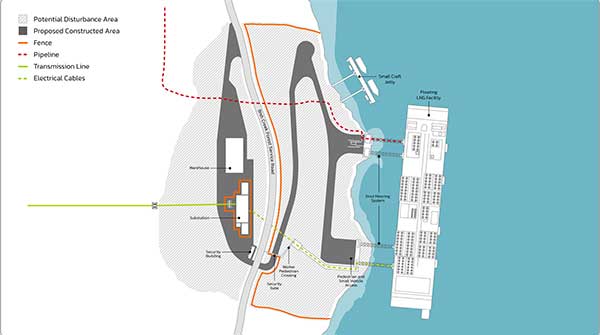Indigenous-led project would export some of the world’s cleanest natural gas

The Haisla Nation and Pembina Pipeline Corporation are primed to hear by the end of this year whether they can build one of the largest Indigenous-owned infrastructure projects in Canada’s history.
Supplied by the Coastal GasLink pipeline, the $3 billion Cedar LNG project near Kitimat would, according to the B.C. Environmental Assessment Office, export some of the world’s cleanest natural gas.
“Cedar LNG is likely to be one of, if not the lowest emission intensity producers of LNG globally, largely because of its reliance on clean B.C. electricity,” the EAO said in its project assessment report.
“Cedar LNG could have a positive impact on GHG emissions globally, if the importing countries were to use the natural gas as a replacement for coal in power production.”
| Related Stories |
| Indigenous ownership in Canadian oil and gas takes huge step
|
| Indigenous peoples faced with a choice of development or poverty
|
| Indigenous-owned Canadian LNG project advances
|
Of key importance to the project is its leadership by the Haisla Nation. The development would provide “unprecedented opportunities,” the community says.
The Nation’s experience working with the LNG Canada project being built has been “transformational,” according to Chief Councillor Crystal Smith.
There are employment opportunities and the ability to invest in social programming, as well as a new apartment complex and a new health centre that, for the first time, includes space for traditional healing.
“Haisla view Cedar LNG as an opportunity to take ownership of industrial development on their lands and use revenues to support local social, educational, and health programs,” the EAO found.
According to the International Energy Agency, switching from coal to natural gas-fired power reduces emissions by about 50 per cent on average.
LNG shipped from Canada can have an even more significant benefit, reducing emissions in Asia by up to 62 per cent, according to a June 2020 study published in the Journal for Cleaner Production.
Thanks in part to colder temperatures, lower methane emissions from natural gas production and use of hydroelectric power, Canadian LNG facilities are expected to have the lowest emissions per tonne of any projects worldwide.
The floating Cedar LNG project is expected to have an emissions intensity of 0.08 per cent CO2 per tonne, less than one-third of the global industry average of 0.35 per cent per tonne.
World LNG demand is surging and expected to double by 2040, driven by expanding Asian economies reducing reliance on coal.
Growing Canada’s export ability with projects including Cedar LNG could reduce emissions in Asia by the annual equivalent of taking all Canadian cars off the road, according to Wood Mackenzie.
With the EAO’s assessment complete, the Cedar LNG regulatory decision is now up to the B.C. government and the federal Minister of the Environment and Climate Change.
The Impact Assessment Agency of Canada concluded in 2019 that it required a federal review.
It said the project “may cause adverse effects” including on fish habitat, aquatic species, migratory birds, and the health, social, economic and environmental conditions of Indigenous peoples.
B.C.’s EAO conducted the assessment on behalf of the federal agency.
It found that Cedar LNG “would not have significant adverse impacts” across a broad range of environmental and social metrics.
This includes emissions, air quality, wildlife, vegetation resources, freshwater fish, marine use, land and resource use, employment, infrastructure and services, heritage resources, and the health and socio-economic conditions of Indigenous peoples.
The province’s response is required within 45 days of the EAO’s assessment, on December 31, 2022. Approval could be granted or denied, or more review could be ordered.
The EAO’s report has also been referred to the federal government for a decision.
Deborah Jaremko is director of content for the Canadian Energy Centre, an Alberta government corporation funded in part by taxes paid by industry on carbon emissions.
For interview requests, click here.
The opinions expressed by our columnists and contributors are theirs alone and do not inherently or expressly reflect the views of our publication.
© Troy Media
Troy Media is an editorial content provider to media outlets and its own hosted community news outlets across Canada.


